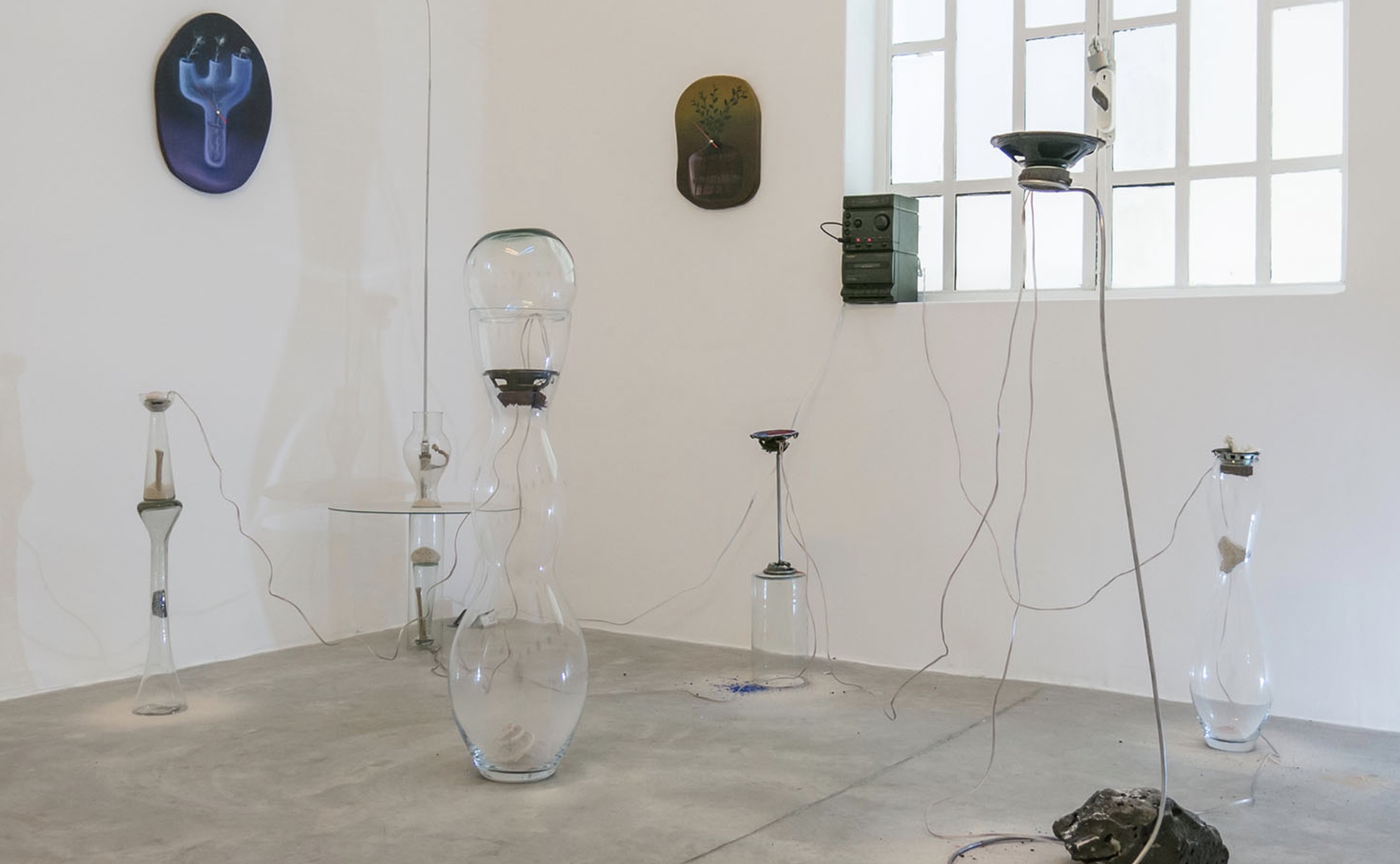
Article
Dear Carolina: A Correspondence Around Clepsidra
by Sandra Sánchez
Exhibition at Daniela Elbahara
Reading time
5 min
January 11, 2022
First of all, I want to thank you for your hospitality. I’m writing to you because the day I visited your exhibition you told me that during your production process you kept up a correspondence with friends. The idea magnetized me since it’s far from the old myth of solitude in the high vacuum of the studio. We’re inhabited all the time by voices and ghosts. Is it possible to write without being called upon? I think the fact that the letters are public—you printed them behind a beautiful poster, ready to take home—encourages me to continue the conversation. (I hope you don’t mind.)
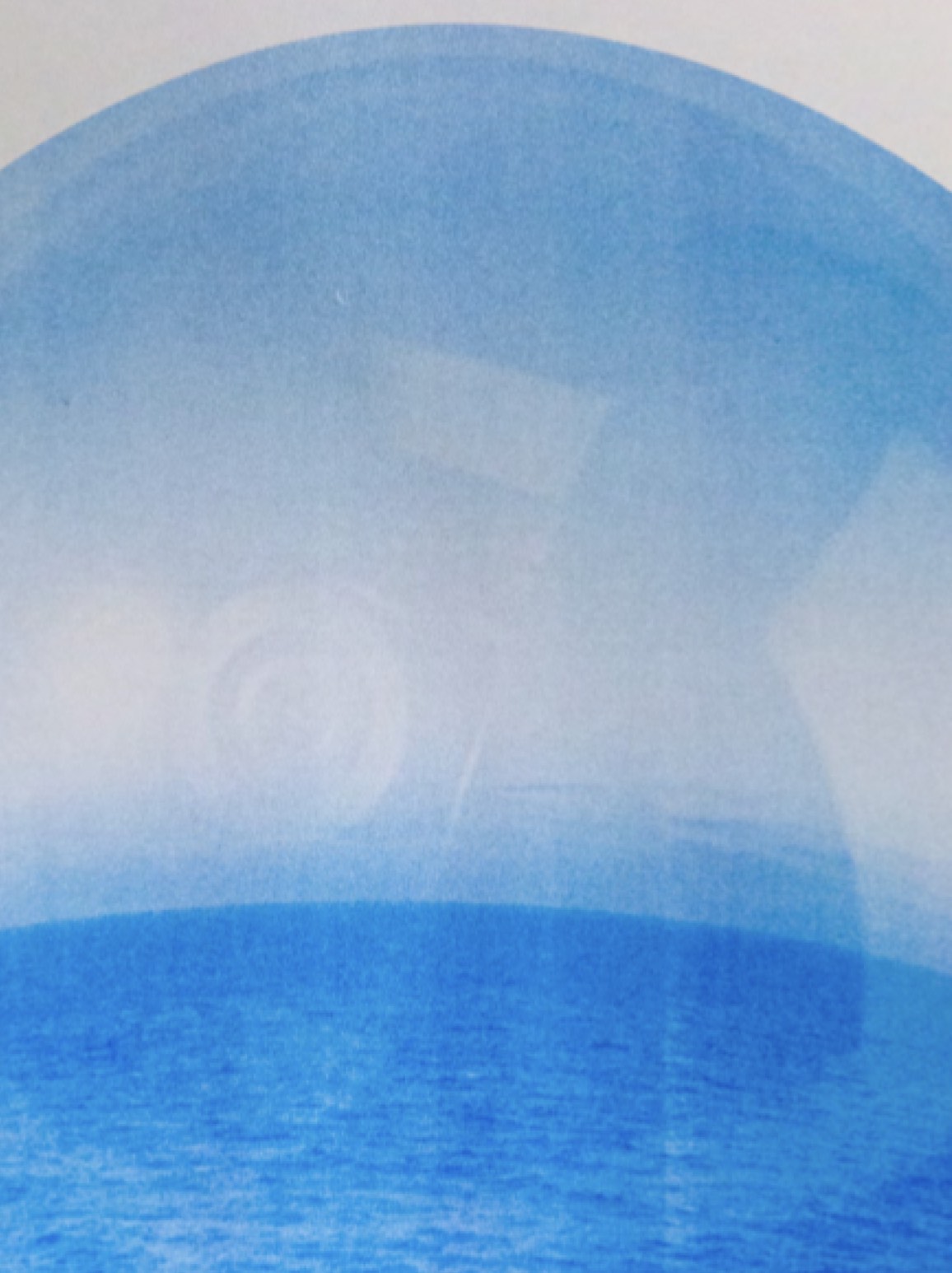
I left the poster behind somewhere, so I go to your Instagram to look for the traces of those conversations, and in one of them I read about the exhibition’s title: Clepsidra. The letter is addressed to E, to whom you say (I suppose it’s you who’s writing) that life on the island isn’t easy because there are machines that keep watch and that go around the beach: besides, the clepsydra (water clock) is quite annoying—there are like 5 on the island, although nobody ever saw them.
Facing someone else’s correspondence, one keeps silent, though that silence is filled with production: of shared responses and shared imaginations. Suddenly I think that in my house there’s a clepsydra as well, albeit a somewhat involuntary one: let’s just say that the leak from my shower also marks time. I listen to it via the annoyance it causes in my cat, Baruch Allegro. In your exhibition I hear it appear in the sound machine that causes vibrations in sand and in entities from the sea, as well as in the tick-tock of the clocks mounted on paintings of beautiful glass vessels scattered in different ways before solidifying. They contain both the water and the flower. Without a doubt, time is aqueous.
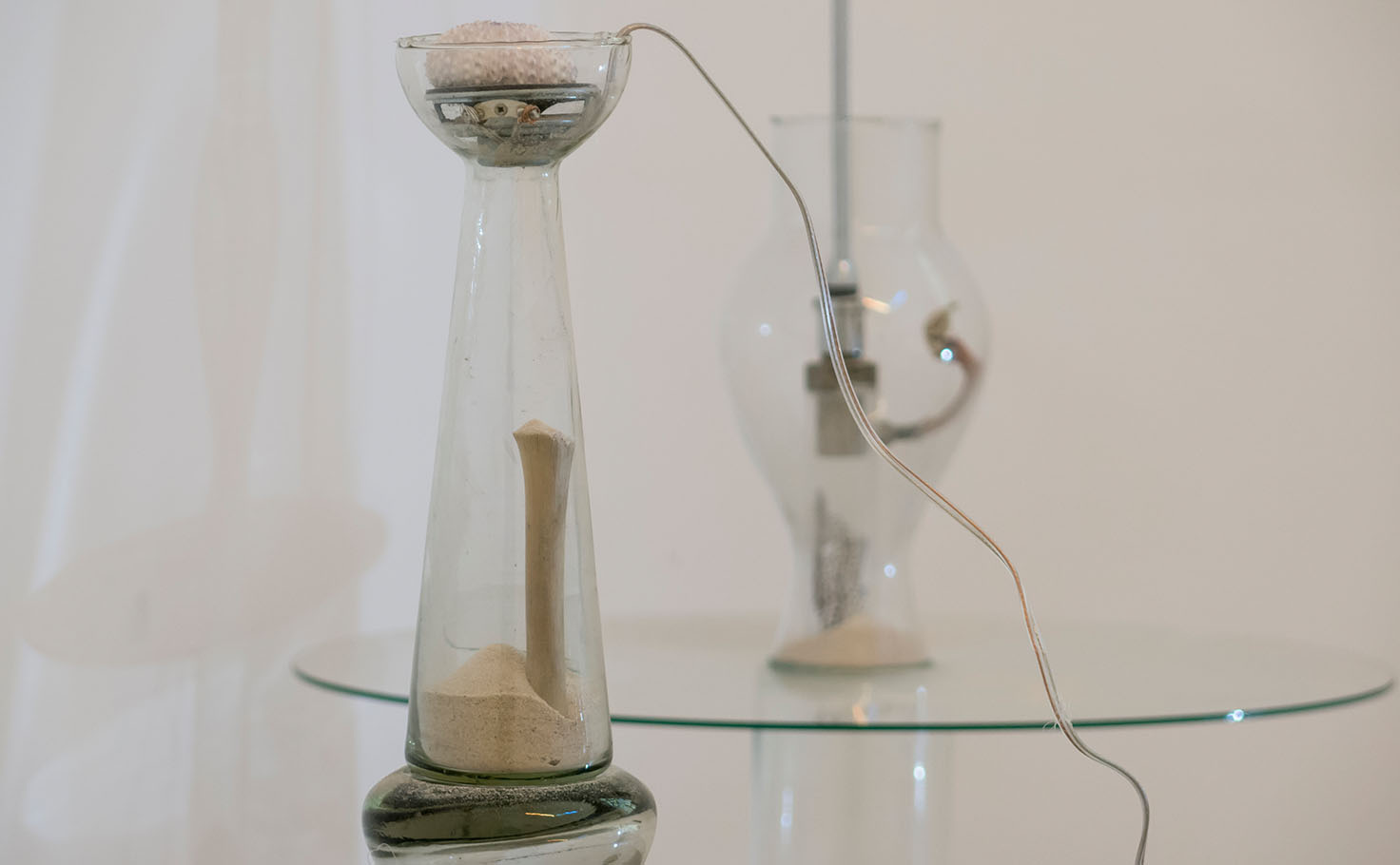
I’m moved by the fact that the paintings literally invite you to see the repetition of an unconventional time on an image. Perhaps the world is a huge clepsydra with its rhizomes, since it’s simply the case that without water there’s no life. And water is never without its rhythms. I confess that art continues to fascinate me because it’s like a drug that’s introduced into the body, leading you to the unsuspected. Tick, tock, tick, tock.
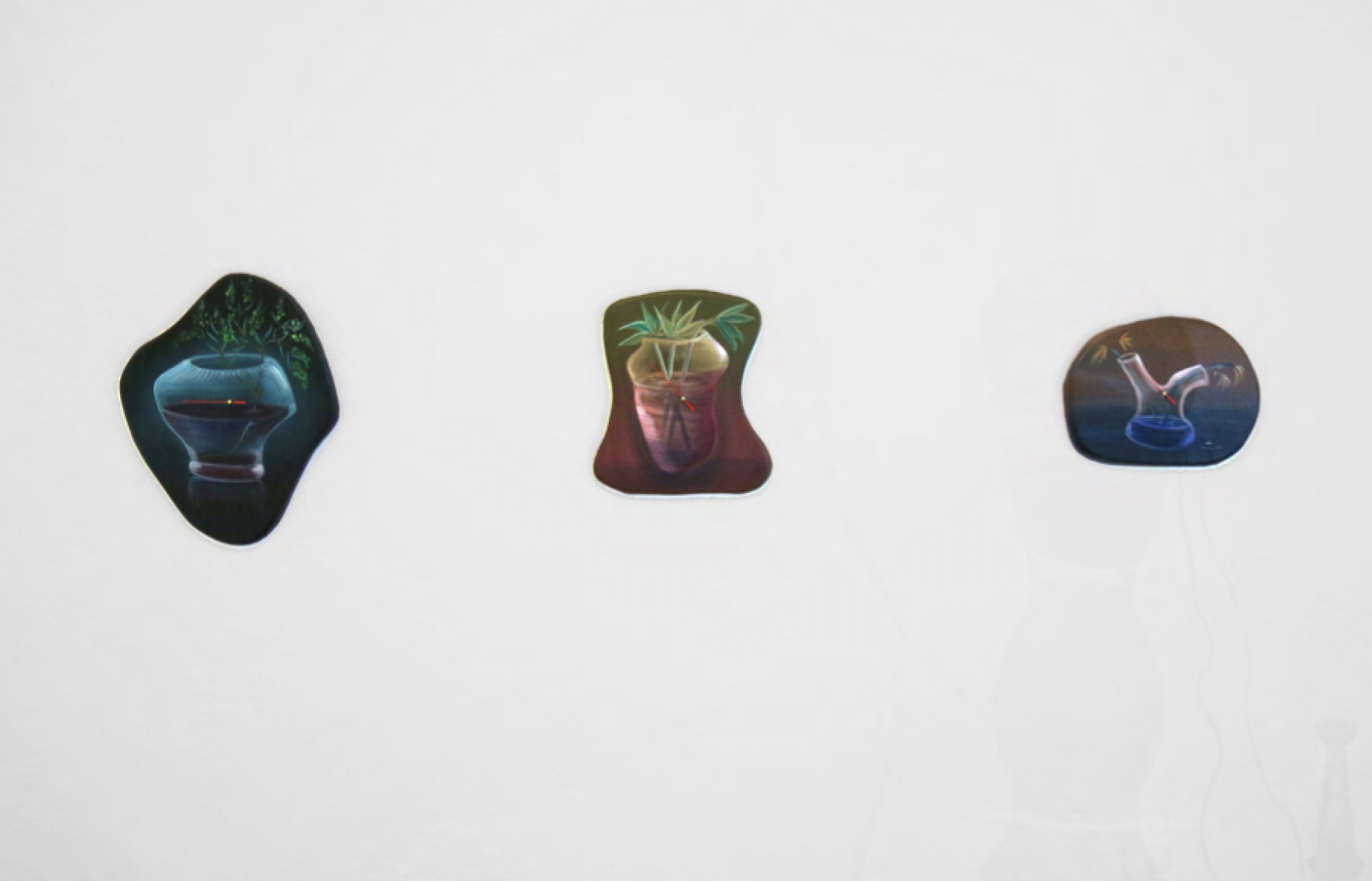
I look at the notebook that I carried that day. There I asked myself, “What place is this?” “What does it smell like here?” “Is it hot or cold?” We’re in a specific place: we recognize the sea in the background, calendar sheets, machines, a bed, cables, a glass of water, a dry plant. At the same time it’s enigmatic and indefinable, albeit recognizable—impossible to test with a zip code, though there is a relationship we can locate: science fiction. I think of the complicity between the two points and the drop of water, allowing time to pass. You tell me that you’ve been working on science fiction for a long time, but that you’re not interested in imagining a future as a consequence of a given past.
During my visit, I also picked up a phrase of yours: the ocean takes everything. I look at the great paintings in the first room. Oils: chiaroscuros and white glosses that hint at life. There are no bodies, but we intuit them by the marks they leave behind: on sheets, in the light of an iPad, a Kindle, or something similar. In the shape of the window, made by an eye that wants to look out and view the sea. Someone was here recently, and we know from their traces that they like to look.
The ocean takes everything. At some point in our conversation, you told me about an inside and an outside, marked by the architecture that halts the wind and the sea. In my notebook I wrote down that—rather than a sharp division between here and there—what I felt was the presence, through painting, of thresholds. Sites where you know that materiality is made to transport you to another place, from which you may or may not return. Thresholds ready to embark on a journey.
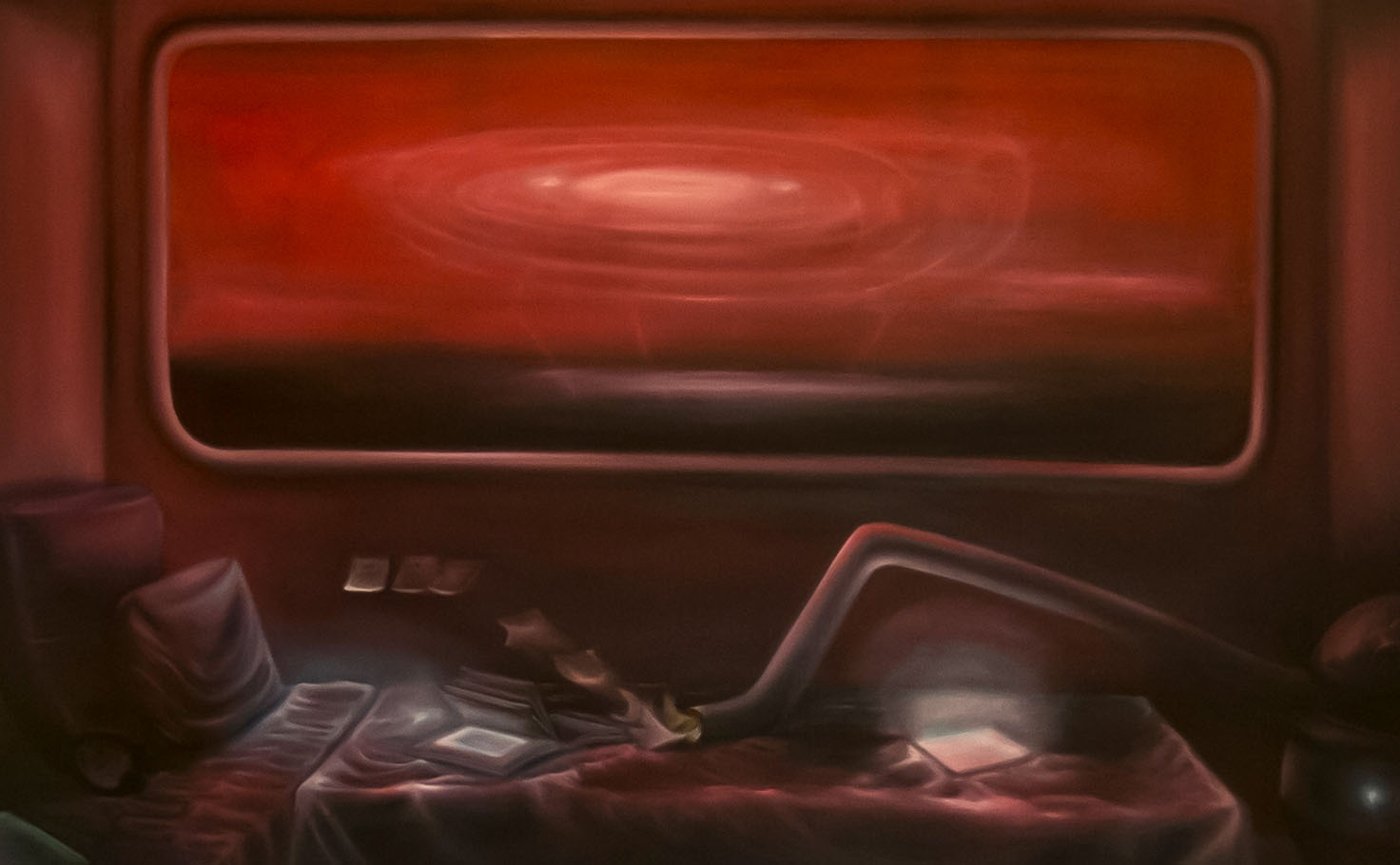
However, with time past and by writing your sentence in this letter, I think there is no inside-and-outside since the ocean takes everything. So I think that what you offer us is the very experience of the coming-and-going of the sea: which is never pendular and which contains both the living and the dead, both history and the inexpressible. This place is impossible to define because it concerns an experience outside of language, although this does not prevent one from going to it in order to enumerate its objects and their coordinates. Carolina, are we in the sea’s state of mind? Could it be that the clepsydras, in their tick-tock, collapse the necessary relationship between present, past, and future?
I have to confess that the first thing I thought of when I saw the red and blue illuminated canvases was the lights of a police car over the space. I don’t know if you confirmed this information. It makes sense that they lurk so closely because the law doesn’t like the unstable, the Lines of Flight, other times, shared imaginations. I’m excited that these paintings frustrate the law, that they make it paranoid about something it can never have in its hands or in its eyes: the vitalism of the ineffable.
xoxo, Sandra Sánchez
Clepsidra by Carolina Fusilier is being presented at Daniela Elbahara Gallery until March 15.
Translated to English by Byron Davies
Published on January 22 2022